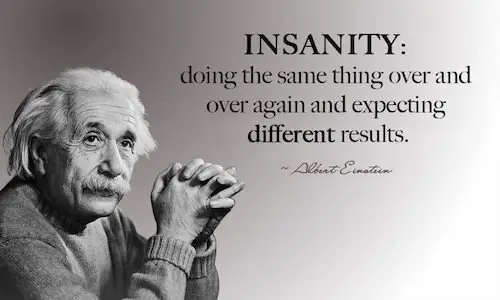The Journey to Change Adoption: Lessons from a 3-Year-Old’s First Pedal Bike Experience

Adoption is not just about the end goal but the journey that leads to it. Watching my three-year-old daughter progress from a balance bike to her first pedal bike reminded me how important strong foundations are in change. She learned step by step, practising balance, steering, and braking, so when the time came, she rode with confidence and joy. Organisations face the same reality: by providing training, introducing challenges gradually, and creating supportive environments, teams are better prepared to embrace change. Successful adoption happens when people feel equipped, supported, and ready to succeed.
Embracing Digital Transformation: A People-Centric Approach

Digital transformation is reshaping how organisations operate, deliver value, and respond to rising customer expectations. It is not only about adopting new technology but also about creating agile, efficient, and customer-focused ways of working. Success depends on people, which is why change management is essential. By focusing on clear communication, employee engagement, training, and support, organisations can manage disruption, overcome resistance, and measure progress effectively. Establishing clear objectives, fostering collaboration, and using data to guide decisions help ensure lasting results. Ultimately, digital transformation is less about systems and more about people, and organisations that embrace this truth are best positioned to thrive in a constantly evolving landscape.
WHEN IS THE RIGHT TIME TO INVOLVE CHANGE MANAGEMENT IN YOUR PROGRAM?

Change is inevitable in any organisation, and managing it effectively can be the difference between success and failure. While technology and processes are often the focus, it is the people who ultimately determine whether change takes hold. Involving change management from the very beginning of a program enables proactive stakeholder engagement, strengthens the business case, informs resource planning, shapes training and support, and significantly increases adoption and success rates. Research shows that early involvement not only boosts employee readiness but also delivers a strong return on investment. In contrast, bringing change management in late often shifts the focus to crisis management, fuels resistance, limits impact assessments, and adds unnecessary costs. Although it is never too late to introduce change management, early integration ensures smoother transitions, stronger engagement, and more sustainable outcomes. By treating change management as a strategic enabler rather than a last-minute fix, organisations can empower people, reduce risks, and realise the full benefits of transformation.
The Art of Failing Forward

Change is the only constant, and progress comes from keeping an open mind, learning from trial and error, and turning lessons into momentum. Clinging to old practices holds teams back; embracing a “fail forward” mindset builds innovation and resilience. Think of cultures that create space for experimentation: not every idea becomes a breakthrough, but the practice fuels growth. The goal is to treat failure as data, not defeat. Make mistakes visible, run honest retrospectives with the people who lived the work, extract causes and insights, adapt the plan, and try again. Build psychological safety so people can take smart risks, share what they learn, and celebrate small wins while staying persistent. Einstein’s warning about doing the same thing and expecting different results is a practical guide here. Organisations that master this approach pivot faster, trust grows, and creativity flourishes. Do not avoid failure; fail fast, fail smart, and use each setback as a launchpad for the next leap.
How to Choose the Right Change Management Methodology

Organisational change is rarely simple, which is why a wide range of methodologies exist to provide structure and guidance. Each has strengths and limitations. ADKAR focuses on individuals, Kotter’s 8-Step model offers a clear roadmap, Lewin’s three-step model is simple but static, and McKinsey’s 7-S provides a holistic but complex view. Others, such as Bridges’ Transition Model or the Kübler-Ross Change Curve, highlight the human side of change, while iterative approaches like PDSA encourage continuous improvement.
The challenge for leaders is deciding which approach to use. In reality, no single methodology fits every situation. At Enable Change Partners, we design tailored strategies by blending the most relevant elements from different models. This ensures that both organisational needs and individual experiences are addressed, improving adoption rates and building internal capability.
For example, in a digital transformation with a multinational client, we combined Kotter’s urgency, ADKAR’s focus on individuals, and Prosci’s structured approach. This mix created a strategy that achieved 95% adoption of new systems within six months, far above expectations.
Customising methodologies in this way helps organisations move beyond theory to practical outcomes, delivering transformation that is both effective and sustainable.
Why Change Managers Are a Program Manager’s Secret Weapon

Program and change managers form a powerful partnership that ensures both the technical and human sides of transformation are addressed. While program managers focus on delivering projects on time, within budget, and against technical requirements, change managers concentrate on preparing people for the journey by driving adoption, building engagement, and ensuring benefits are realised. Change managers bring essential tools such as stakeholder analysis, impact assessments, tailored communication, training programs, and executive coaching, freeing program managers to manage resources, budgets, milestones, and reporting. Together, they balance distinct responsibilities with shared goals, reducing risks and increasing the likelihood of success—projects with strong change management are six times more likely to meet objectives. Real-world examples, from major tech rollouts to large-scale restructures, show how this collaboration transforms challenges into opportunities and ensures sustainable outcomes. When program managers and change managers work hand in hand, they not only deliver systems and structures but also enable lasting organisational change, making the partnership not optional but essential for success.
Demystifying the Role of Change Manager: More Than Just “Managing Change”

Change managers play a vital role in turning business strategies into real outcomes by supporting the people who make change possible. We act as bridge builders between vision and execution, translating strategy into practical steps employees can embrace. As advocates, we ensure staff voices are heard and needs are considered, while also negotiating between competing priorities to keep transitions smooth. We provide a reliable support system through the challenges of change, mitigate risks by anticipating obstacles, and help shape culture to sustain new ways of working. By boosting efficiency and adoption, we make transformations more effective and ensure benefits are realised faster. In short, change managers are strategists, communicators, and problem-solvers who guide organisations through the complexities of evolution—facilitating not just change, but lasting transformation.
Change Management isn’t just for big corporations with big budgets

Change management is not just for large corporations with endless budgets. Small and mid-sized businesses can also benefit by making transitions smoother, supporting their people, and improving efficiency without disrupting daily operations. The key is focusing on what matters most: engaging employees, addressing their concerns, and tailoring solutions to fit available resources. As the Birdsnest story shows, even smaller businesses can achieve remarkable results when they combine customer focus, cultural alignment, and smart use of technology with structured change practices. With the right support, change becomes less overwhelming and more of an opportunity to build resilience, confidence, and long-term success.
Change Management vs. Change Enablement

Change enablement has evolved from traditional change management to better support people through their individual change journeys. While change management provides structure, planning, and methods to guide transitions, change enablement equips people with the tools, confidence, and mindset to adapt and thrive.
The difference matters. Change management is process-driven, often applied at the execution stage to reduce disruption and resistance. Change enablement is people-centred, happening before, during, and after change. It focuses on coaching, co-design, and human-centred practices that build resilience, collaboration, and agility.
Together, they complement each other. Change management ensures order and direction, while change enablement ensures engagement and ownership. Organisations that embrace both minimise disruption, sustain adoption, and future-proof their teams for ongoing transformation.
